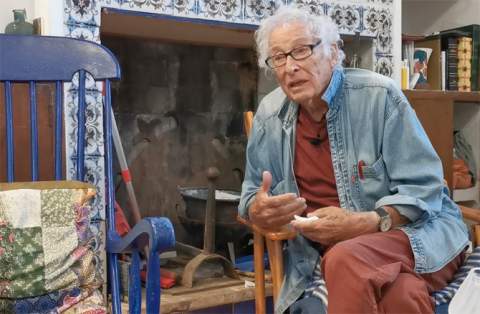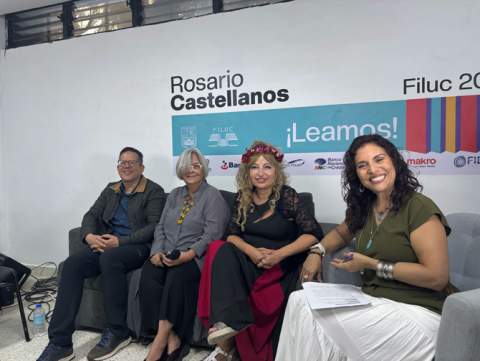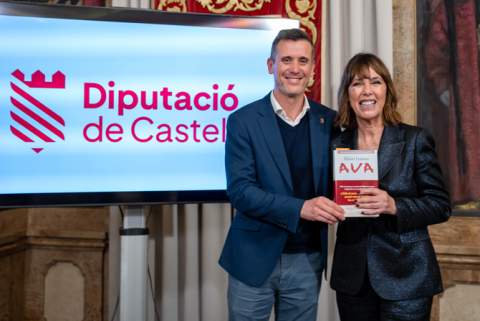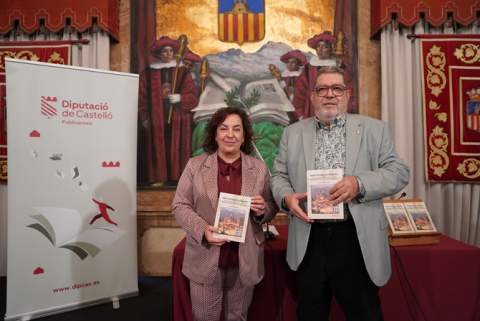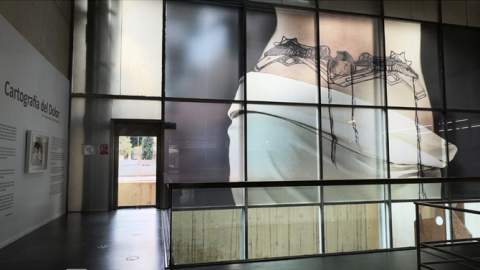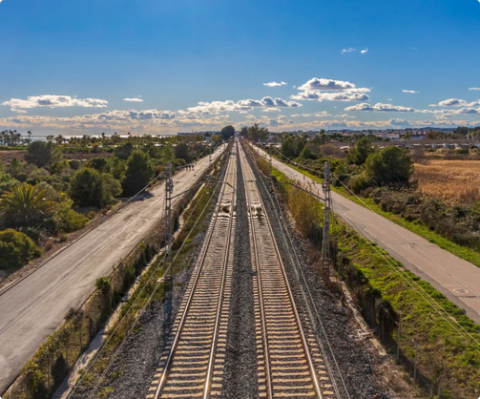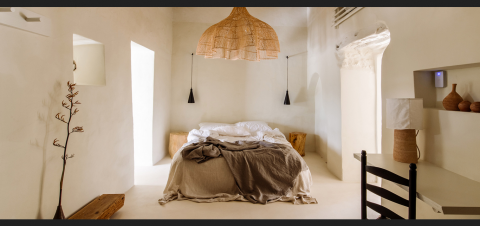A study by the UPV proposes constructing a panoramic viewing point at the Santa Lucia Ermita in Alcossebre
 The Heritage General Management could approve the removal of the building alongside it and an archaeological investigation would establish whether there were any traces of the past remaining which would have to be preserved in this space.
The Heritage General Management could approve the removal of the building alongside it and an archaeological investigation would establish whether there were any traces of the past remaining which would have to be preserved in this space.
In a first draft of its conclusions, the study, which was commissioned by the Alcala-Alcossebre Council from the Architectural Composition Department of the Valencian Politechnic University to recuperate the local heritage in the surroundings of the Santa Lucia Ermita in Alcossebre, proposes to alter the volume of the building and improve the public space so that visitors can have a better view.
This would be achieved following two key actions: on the one hand, the removal of the side building and, on the other, the adaptation of the space by constructing a panoramic viewing platform from which the landscape could be seen more clearly, with the construction of some steps like an amphitheatre. The side building was erected in the 1960s and has no historic value. It has also been found that this building is affected by aluminosis (a condition found in buildings where aluminous cement has been used) and because of its condition, it is recommended that it be demolished. This first report has been sent to the Direccion General de Patrimonio so that the Conselleria could view the demolition favourably and the whole project would be accompanied by an archaeological dig. In the event that any traces are found in this space, it would be possible to take advantage of this and show it as an additional cultural space.
Professor Javier Poyatos explained that the side building was not in keeping with the architecture of the chapel so that, if it was demolished, we would be adding value to the main building and, at the same time, we would have a new viewing point serving as a place of tourist interest and showing that the Santa Lucía parish is unique, being a privileged lookout place from which both the coast and the province inland can be seen”. The UPV’s proposal also includes providing solutions to the different levels found in this new space for the public, building different platforms showing the topography and a system of steps which would enable one to reach the top area. According to the study, “when built, the project would stress that it was a place to be, a place for rest and contemplation for visitors who, whether on foot, by bicycle or by other means, had reached the place. Great care would be taken to make it a contemporary design that would not damage, but improve the general overall aspect of the ermita and its surroundings”.
These first conclusions in the UPV study were exhibited today by professors Javier Poyatos and Jaime Sanahuja to the Alcala-Alcossebre Council town groups. The Town Planning councillor, José Colom, indicated that “the first phase of the project would depend on whether the Direccion General de Patrimonio approves the demolition and that the archaeological dig is carried out. Then we will consider the project as we believe that it would be very interesting to convert the Santa Lucía Ermita into a more attractive public space which might act as a focal point for the arrival of visitors and which would ensure accessibility and enjoyment”.
 The Heritage General Management could approve the removal of the building alongside it and an archaeological investigation would establish whether there were any traces of the past remaining which would have to be preserved in this space.
The Heritage General Management could approve the removal of the building alongside it and an archaeological investigation would establish whether there were any traces of the past remaining which would have to be preserved in this space.
In a first draft of its conclusions, the study, which was commissioned by the Alcala-Alcossebre Council from the Architectural Composition Department of the Valencian Politechnic University to recuperate the local heritage in the surroundings of the Santa Lucia Ermita in Alcossebre, proposes to alter the volume of the building and improve the public space so that visitors can have a better view.
This would be achieved following two key actions: on the one hand, the removal of the side building and, on the other, the adaptation of the space by constructing a panoramic viewing platform from which the landscape could be seen more clearly, with the construction of some steps like an amphitheatre. The side building was erected in the 1960s and has no historic value. It has also been found that this building is affected by aluminosis (a condition found in buildings where aluminous cement has been used) and because of its condition, it is recommended that it be demolished. This first report has been sent to the Direccion General de Patrimonio so that the Conselleria could view the demolition favourably and the whole project would be accompanied by an archaeological dig. In the event that any traces are found in this space, it would be possible to take advantage of this and show it as an additional cultural space.
Professor Javier Poyatos explained that the side building was not in keeping with the architecture of the chapel so that, if it was demolished, we would be adding value to the main building and, at the same time, we would have a new viewing point serving as a place of tourist interest and showing that the Santa Lucía parish is unique, being a privileged lookout place from which both the coast and the province inland can be seen”. The UPV’s proposal also includes providing solutions to the different levels found in this new space for the public, building different platforms showing the topography and a system of steps which would enable one to reach the top area. According to the study, “when built, the project would stress that it was a place to be, a place for rest and contemplation for visitors who, whether on foot, by bicycle or by other means, had reached the place. Great care would be taken to make it a contemporary design that would not damage, but improve the general overall aspect of the ermita and its surroundings”.
These first conclusions in the UPV study were exhibited today by professors Javier Poyatos and Jaime Sanahuja to the Alcala-Alcossebre Council town groups. The Town Planning councillor, José Colom, indicated that “the first phase of the project would depend on whether the Direccion General de Patrimonio approves the demolition and that the archaeological dig is carried out. Then we will consider the project as we believe that it would be very interesting to convert the Santa Lucía Ermita into a more attractive public space which might act as a focal point for the arrival of visitors and which would ensure accessibility and enjoyment”.



